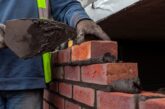
Jamie Squires, product manager at Sika, looks at technical initiatives which are driving the evolution of concrete repair.
Quite correctly, the construction industry is more focused than ever on ensuring its members and generations to come are working smarter and cleaner for the sake of the environment. This ambition will be aided by the development of products which streamline the building or renovation process. In fact, putting an emphasis on refurbishment, rather than building anew, could be seen as one of many important steps that need to be taken if the government is to fulfil its pledge to make the UK carbon-zero by 2050. After all, properly maintaining existing infrastructure spares a lot of emissions that would have otherwise been spent on demolition and constructing something in its place. But how can the refurbishment process itself become more refined and environmentally-friendly without comprise to performance?
New and future solution
As a company driven by innovation, Sika is constantly looking to create products where quality and sustainability are at the forefront. An example of this is the production of a concrete repair mortar – SikaMonoTop-412 Eco – which uses recycled waste materials, rather than traditional slag, in the mortar mix. Fly ash, a fine powder that is a by-product of burning pulverised coal, forms a compound similar to Portland cement when mixed with lime and water. This not only improves the mortar’s strength and finish; as it is a by-product it has low embodied energy and is therefore kinder to the environment.
Formulations of SikaMonoTop-412 Eco are being produced by Sika’s sister companies in Switzerland. It’s a sign, therefore, that recycled waste replacement mortars are likely to feature more prominently in concrete refurbishment over the next five years or so.
War on waste
However, sustainability doesn’t rest solely on a product’s composition. Material waste in the form of packaging and containers can affect a contractor’s environmental rating following a new-build or refurbishment project. As a result, Sika is in the process of developing a multipurpose, three-in-one mortar. It will mean rather than having hand-placed, pourable and finishing mortars in separate bags, Sika’s solution will allow the three processes – with the addition of water – to be carried out from one bag. A seemingly simple advancement such as this could have a big effect on the sustainability of future concrete repair projects.
Alternative to tradition
Although not recent additions to the marketplace, other Sika concrete repair and protection solutions such as corrosion inhibitor Sika FerroGard-903 + are setting the standard for future emission-reducing refurbishment practices. SikaFerroGard-903 + is a surface-applied liquid which penetrates concrete and forms a passive layer around the reinforced steel, thus delaying the corrosion process and reducing its rate. This simple time and cost-effective practice increasesstructural service and maintenance lifecycles by up to 15 years when used as part of a complete repair and protection system.
Sika Galvashield represents another concrete repair and management system of current and future relevance. It contains sacrificial galvanic anodes which comprise a zinc core encased by a small, cementitious shell. This is installed within concrete repair sites to prevent incipient anodes developing, or outside the repaired area to protect the reinforcement in chloride-infused concrete.
With the galvanic, sacrificial anode system, the reinforcement can be hand or mechanically prepared by wire brush or abrasive paper. The corrosive damage doesn’t have to be eradicated to the same level as if using grit or water-blasting, thus the ingeniously-simple anode solution requires less energy usage than more traditional corrosion management methods.
In summary, the future of concrete repair will be based on systems and practices which maintain a structure’s integrity as sustainably as possible. The call for leaner, greener refurbishment of roads, bridges, tunnels and the like will grow louder as the years progress.








